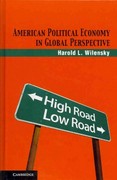Answered step by step
Verified Expert Solution
Question
1 Approved Answer
16. Government can address the negative welfare implications of monopoly by: a. making the monopoly charge marginal cost pricing and covering the resulting loss by
16. Government can address the negative welfare implications of monopoly by: a. making the monopoly charge marginal cost pricing and covering the resulting loss by means of the unit subsidy. b. taxing the monopoly more than its profits. c. selling the rights of production to a monopoly's competitors d. by forcing the monopoly to increases wages and salaries 17. The x-inefficiency of a monopoly is evident through: a. the tendency of the monopoly to produce outside the production possibilities curve b. the low productivity levels of the monopoly caused by lack of completion and incentive to innovate c. the monopoly's dynamic consequences of the distribution policy aimed at taxing the rich and subsidizing the poor. d. how the monopoly causes income and substitution effects or the disincentive effect 18. Nozick's third principle acknowledges: a. that reaching majority assists efforts to eradicate poverty b. for democracy to be ineffective, every individual must be given one vote and the issue or policy receiving the most votes is the one that wins c. that in a representative democracy individual voters do not elect representatives who make decisions on their behalf. d. the challenges inherent in redistributing resources between individuals. 19. For the efficient pricing rule for private goods to hold: a. marginal cost should equal marginal revenue b. the consumption of a private good cannot be restricted to given individuals c. private goods need to be wholly divisible amongst individuals d. price must equal marginal cost 20. It is vital that government manages its spending prudently as excessive expenditure growth can: a. lead to rising general prices and stifle private investment b. create jobs to relieve unemployment pressures in the economy c. promote capital inflows that drive investment expenditure d. promote or obstruct efficiency and equity. 21. Government can cover a budget deficit by: a. raising carbon tax rates b. Increasing money supply c. borrowing via the financial markets d. deregulating natural monopolies that are inefficient and consume taxpayer funds 22. If South Africa's economy achieves allocative efficiency, it implies that: a. X-inefficiency must be Pareto optimal b. Economic inefficiency in consumption must occur such that no allocation of commodities can decrease the utility of either of three consumers c. producers and consumers achieve disequilibrium simultaneously d. the economy is operating at a point on its contract curve 23. Which of the following statements is correct? a. All economic efficiencies other than allocative inefficiency are X-efficiency. b. Allocative inefficiency refers to a situation where resources are allocated efficiently c. X-inefficiency is maximised when resourced are allocated d. X-inefficiency covers economic inefficiencies that are allocatively inefficient 24. Which of the following statements is correct? a. externalities are pathological when they have an indirect effect on the level of production or consumption of the other party b. A positive external effect occurs where the marginal external benefit is less than zero and the marginal cost benefit exceeds the marginal social benefit. c. A positive external effect occurs where the marginal external benefit is greater than zero and the marginal social benefit exceeds the marginal private benefit d. externalities are negative when the actions of an individual producer or consumer confer a positive benefit on another party free of charge 25. The Meltzer-Richard Hypothesis explains holds that: a. Redistribution policies may harm the growth of government expenditure in a planned economy b. income is allocated on the basis of a voting majority that is influenced by the median voter c. there is no pressure for redistributing income if the median voter earns the average income d. Redistribution benefits those who cannot vote
Step by Step Solution
There are 3 Steps involved in it
Step: 1

Get Instant Access to Expert-Tailored Solutions
See step-by-step solutions with expert insights and AI powered tools for academic success
Step: 2

Step: 3

Ace Your Homework with AI
Get the answers you need in no time with our AI-driven, step-by-step assistance
Get Started


